-
Where to start with garden design?
 Lee Burkhill: Award Winning Designer & BBC 1's Garden Rescue Presenters Official Blog
Lee Burkhill: Award Winning Designer & BBC 1's Garden Rescue Presenters Official Blog

The boring garden is something that often starts the process of looking into a garden design. Looking out over an uninspired space can be enough of a drive to turn the blank garden into something fantastic. Starting garden design is an exciting but considered process. One that should not be rushed into but carefully planned.
The sad fact though is that many people give up on gardening before they have even begun because they get completely overwhelmed by their garden space. Looking out at a neglected patch of turf and borders can be paralysing to most people. Not knowing where to start and the fear that "it will take ages to sort my garden out" can make you turn around and head for the door. How do you turn your boring garden into something much more inviting?
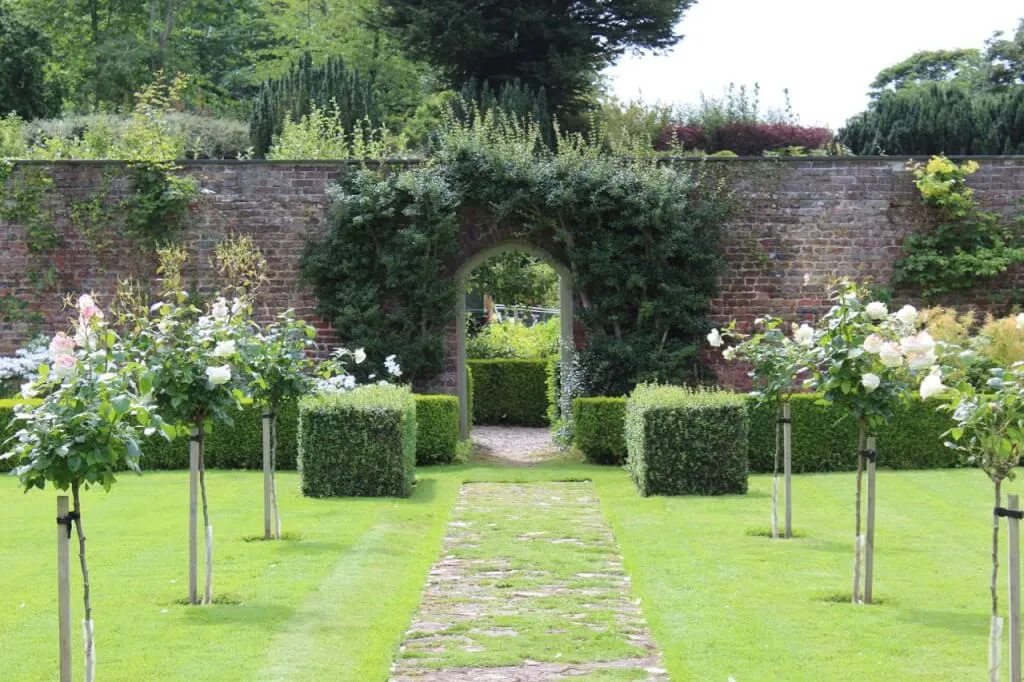
Garden Ninja believes that every garden shape whether it be big, small, rambling, awkward or otherwise can become the garden of your dreams. Even on modest budgets there really should be no barrier to enjoying your outside space. I have yet to find a garden that is unworkable because of its shape and I want to help you get the most out of your garden layout.
Having a garden is a valuable asset to your property and you should ensure you can get the most use out of it. You wouldn't ignore a room in a house because it has a slightly odd layout, would you? Not when you could rearrange the layout until it functioned for you, even that small awkward box bedroom can be transformed! Reworking the space to make it both functional and beautiful is the key to garden design. So start by thinking 'what would I like to do in the garden?' or 'how will I enjoy my garden?'.
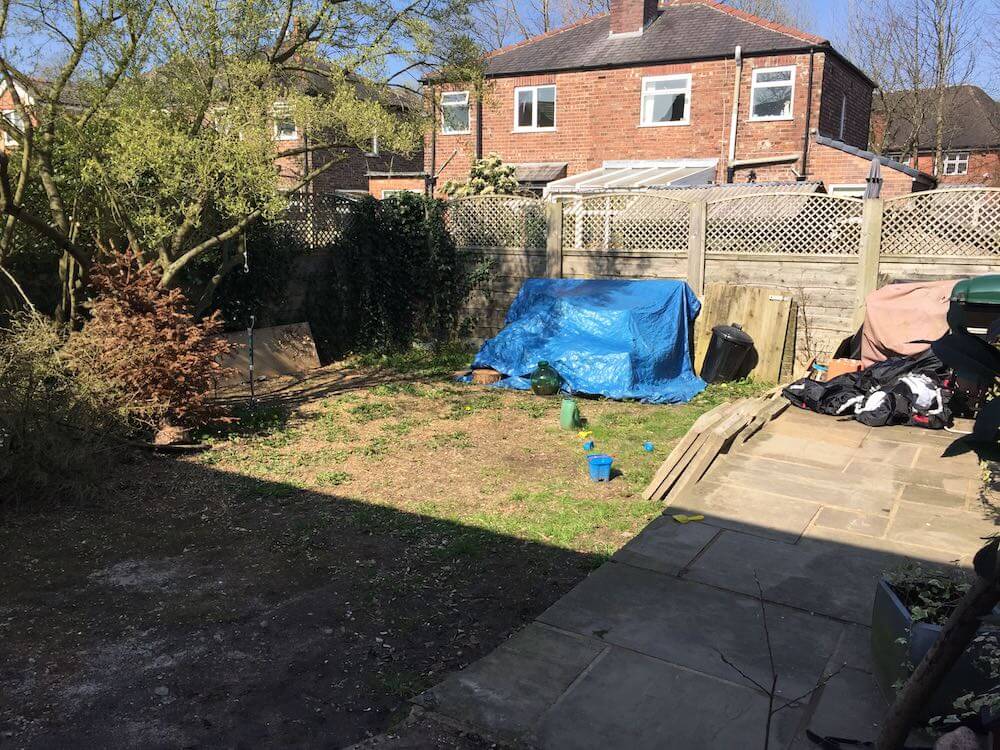 A reworking of the gardens key features paying attention to the proportions of the house and aspect are the starting points for a garden redesign. The below transformation makes a feature of the shed, extends the terrace to enable the owner to sit in the sun, added raised beds to transform the garden. Look at the simple transformation below. It has interest, a dab of mystery and a more cohesive layout.
A reworking of the gardens key features paying attention to the proportions of the house and aspect are the starting points for a garden redesign. The below transformation makes a feature of the shed, extends the terrace to enable the owner to sit in the sun, added raised beds to transform the garden. Look at the simple transformation below. It has interest, a dab of mystery and a more cohesive layout.
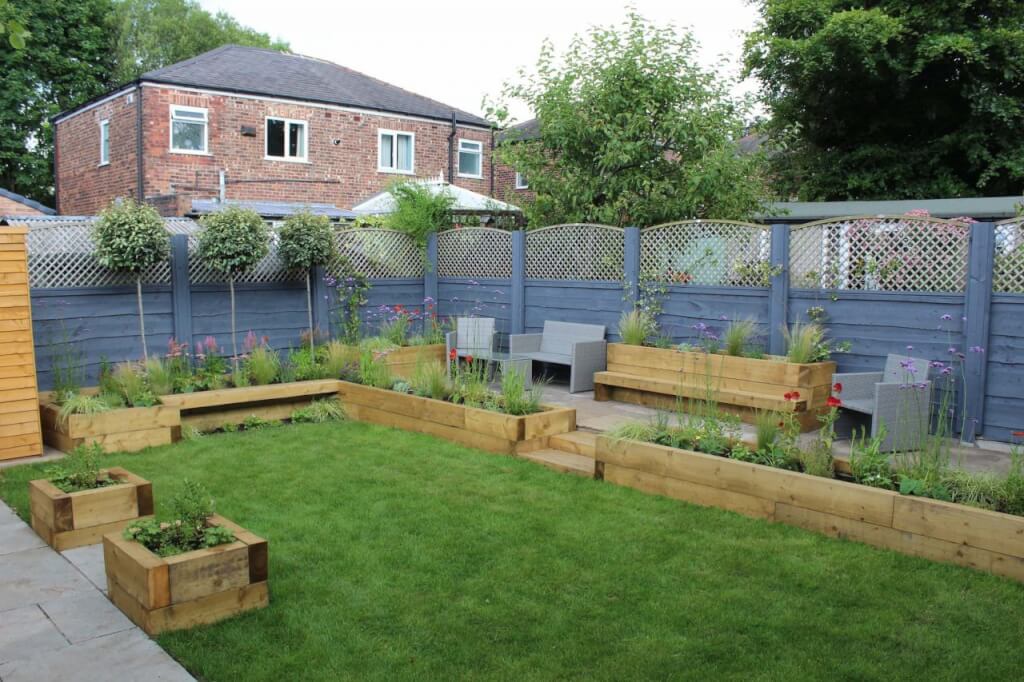 How to start a garden design?
How to start a garden design?Even the most awkward or lacklustre shaped garden can become a retreat to be proud of. With clever design, an awkwardly shaped garden can become incredibly functional by:
The basic of any garden design should be a site survey and plan of the garden in its current state. This will not only give you the scale and proportion but a blueprint to work from when trialling concept designs. You can either pay a designer to do this as part of a design service professionally or have a go yourself.
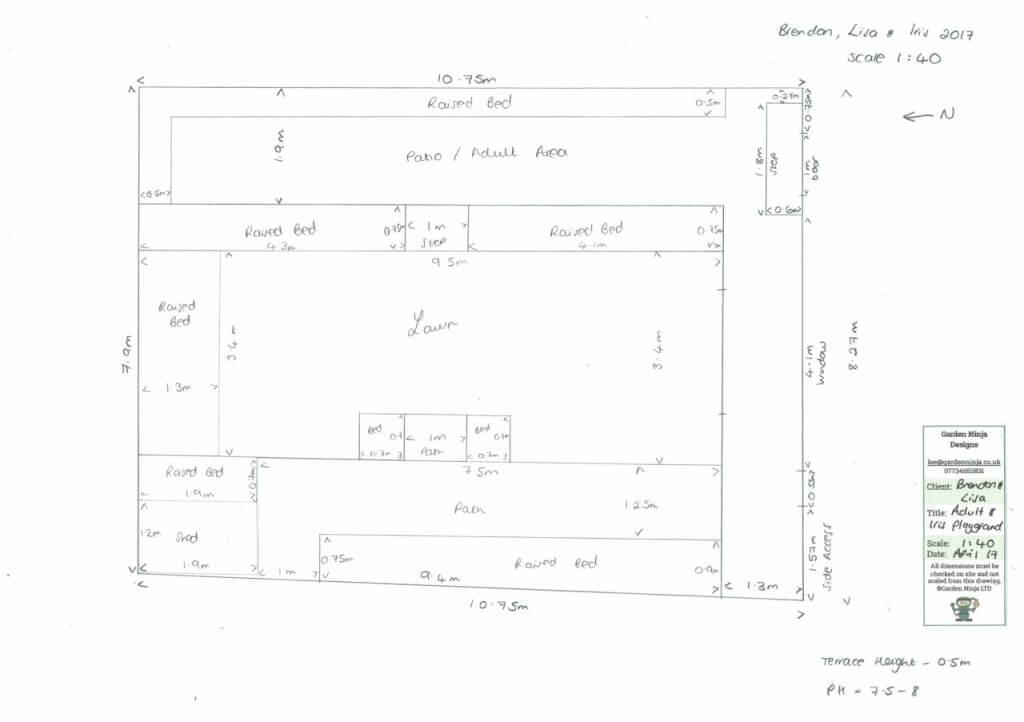
Measuring accurately each boundary, hard landscaping, window, door and area is essential
The aim is to measure the outline of the garden and then work your way around measuring hard landscaping, such as paths or buildings. Taking a measurement of any trees or existing structures. Then map these carefully onto a sketch of the garden. Check and measure twice, cut once! Whilst this sounds easy on paper, it is quite a time consuming and critical part of garden design. Really large estates or complicated gardens with lots of existing structures should really be surveyed by a professional. It is this scale draft plan that you will use for all your iterations of potential designs so make a few copies!
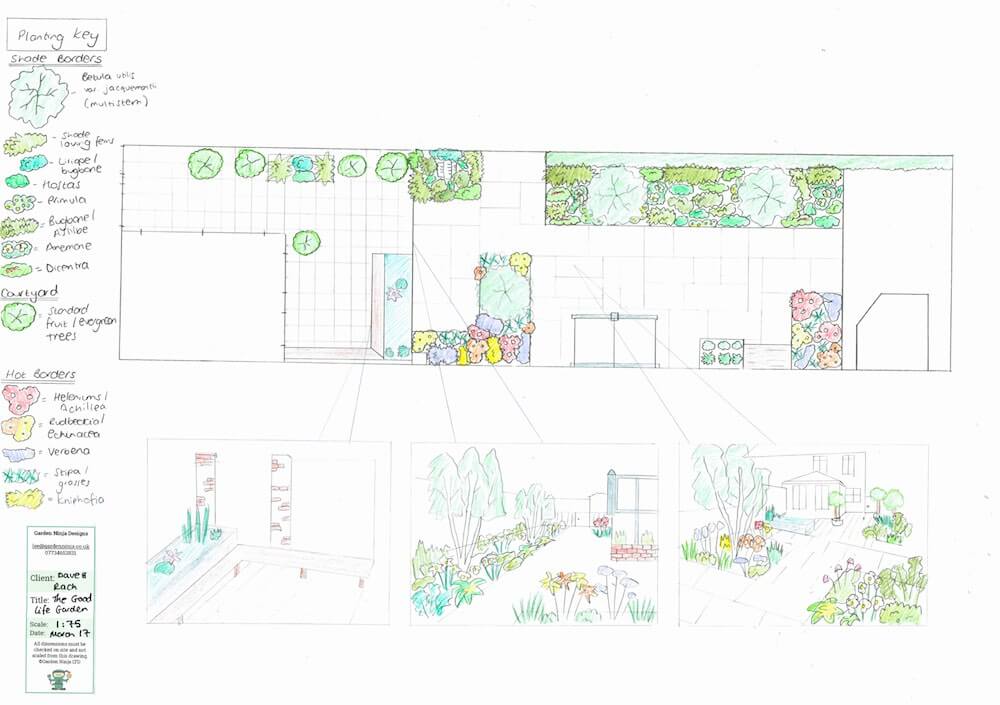
Finished professional garden design
Paying careful attention to the following areas should enable you to avoid expensive mistakes, such as placing seating areas in shady corners, planting schemes that fail to grow properly or expensive hard landscaping decisions!
It's really important that you work out what exactly you want your garden to do. Is it that you want a functional space to eat relax and socialise in? Or maybe you want a horticultural garden with rolling vistas of plants that you can stare out into during the day from indoors. The way you want to use your garden ultimately drive the design so it's paramount to understand what you're going to use it for.
A clever trick in any garden design is to use a focal point. This immediately attracts the viewer's eye when they enter the garden. Whether this is ornamental, a seating area, a water feature or architectural plant. The main aim to grab your attention and pull it to this focal point. Usually, this focal point is slightly out of reach. For example, you don't want it to be 2 metres in front of you which would give the impression of making the garden smaller.
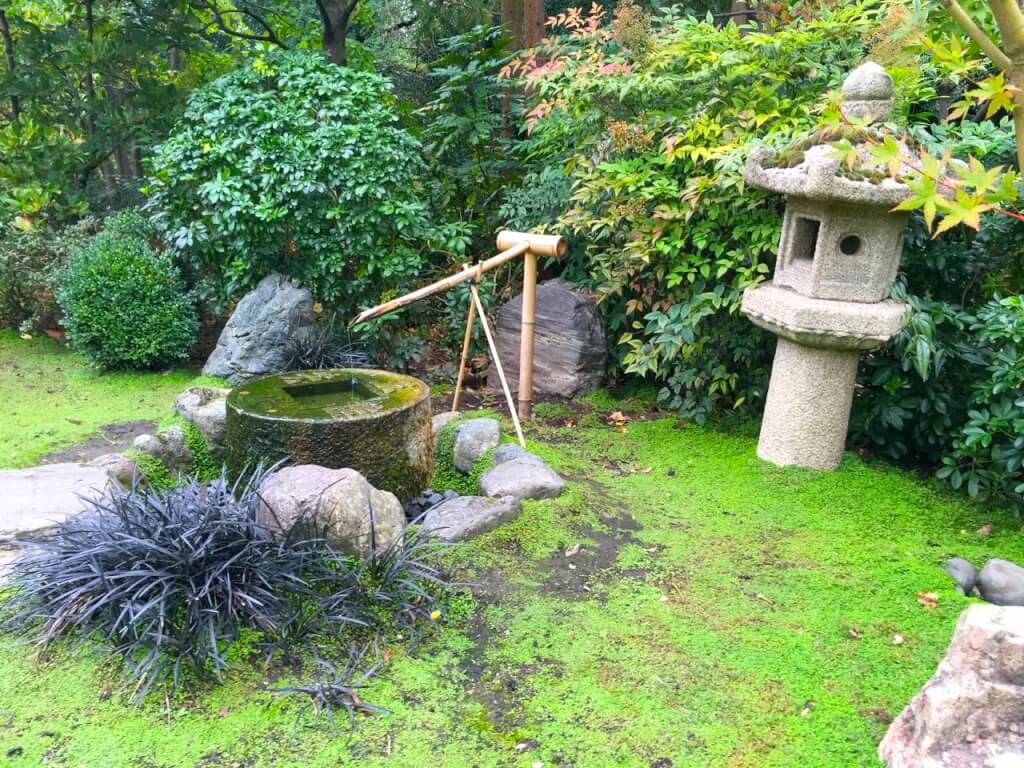
I usually advise that a focal point is in the best area of your garden. What's the best area of my garden you may ask? This is the area that either gets the most sun, has the nicest view, aspect or conditions. You don't want to put a focal point in the dampest shadiest part of the garden. That is unless you're going for a shade loving bog garden!
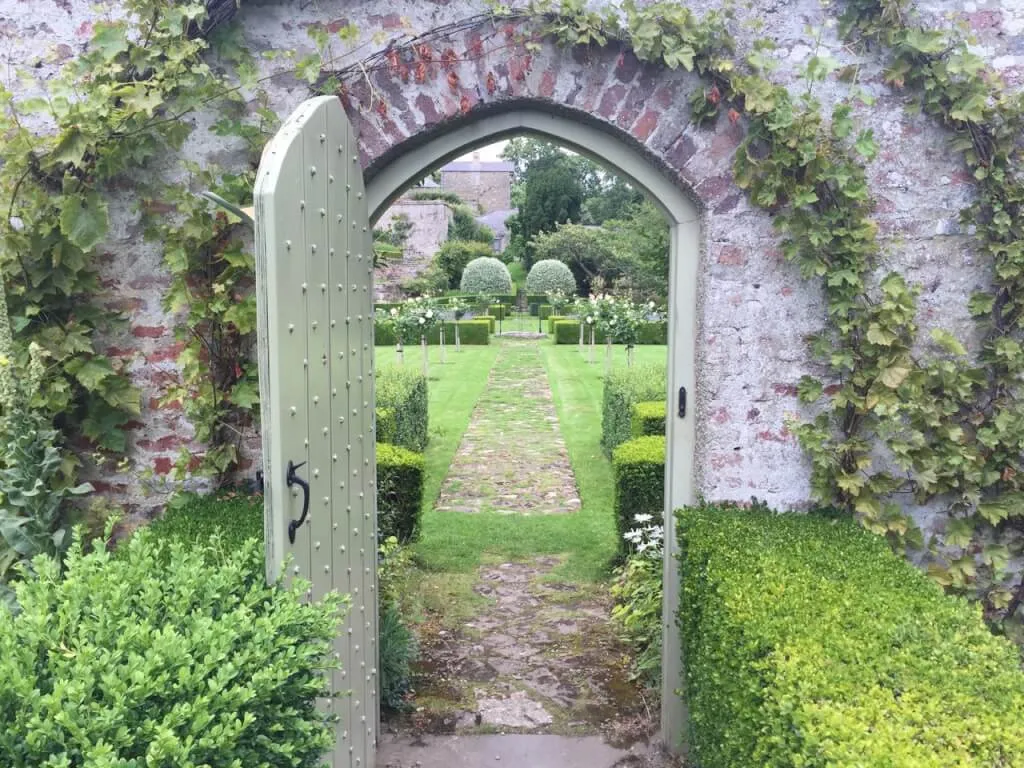
By scaling the focal point to the garden size you can still get the same effect. The example below shows how a set of standard trees can provide a focal point to draw the eye through the garden.
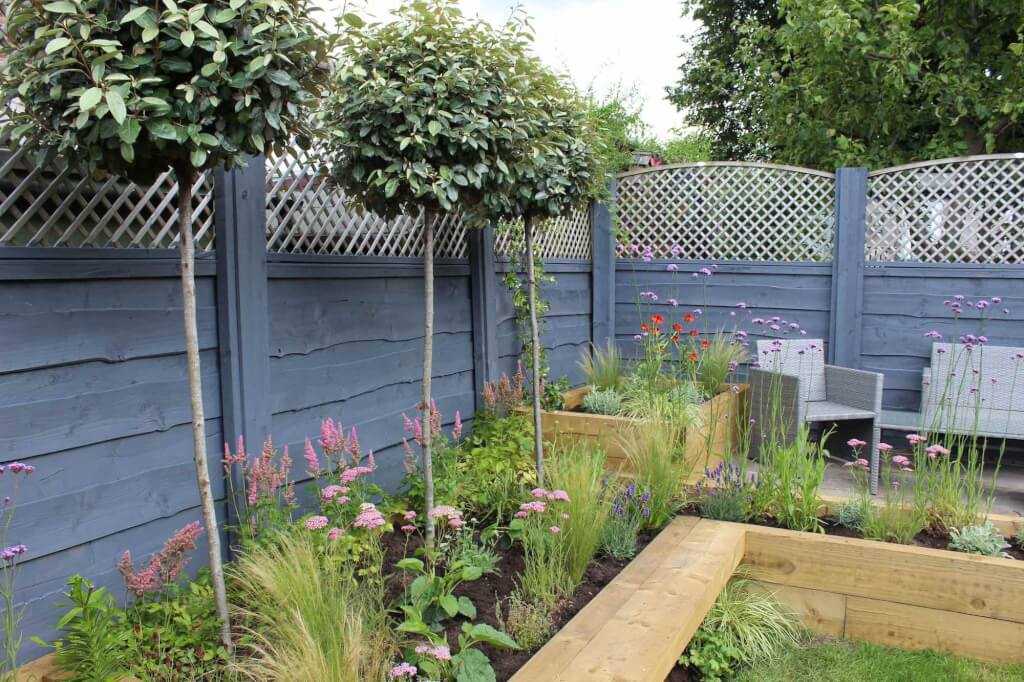
You don't need a huge statement piece for a focal point, like the statue. What's effective is something that is obvious, visible and meant to attract your attention. You can use plants as a focal point but usually, this is an architectural plant, something that stands out, rather than a plant already used in the plant scheme that blends in.
Another good tip for an awkward garden is to use screening to hide or take the attention off those areas that are undesirable. All gardens have those awkward places usually where a compost bin, untidy shed or weird angular corner is. Whilst you can plant these to disguise them sometimes screening them off is a better use of the space altogether.
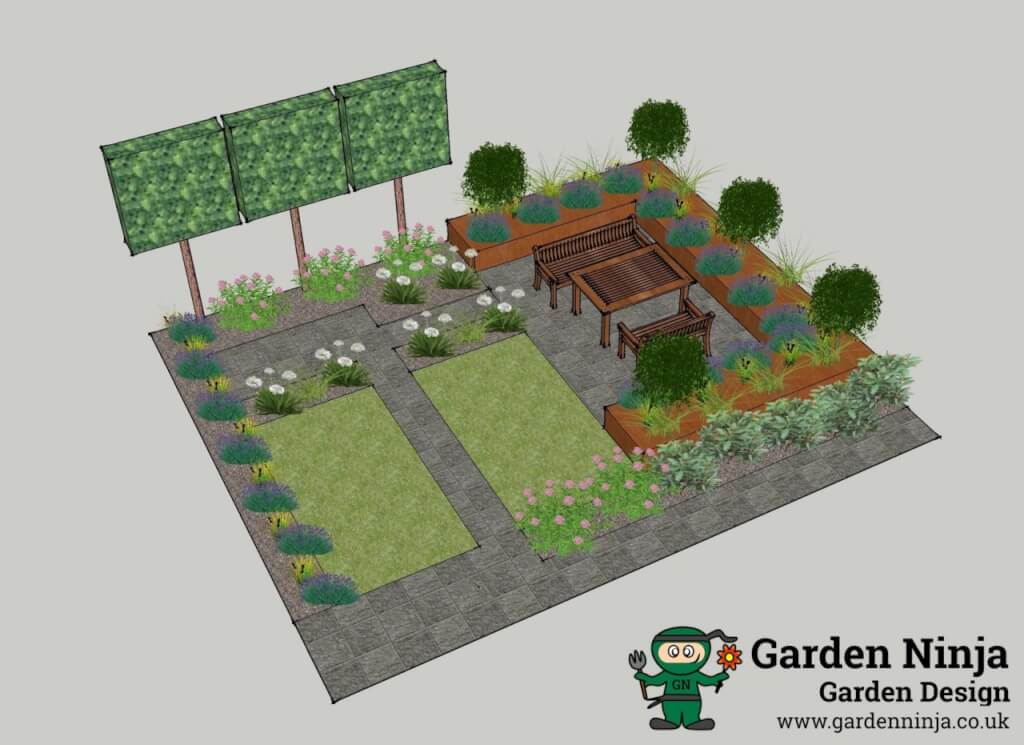
Pleached trees are used here to screen off a neighbours view
By using screening, you can redefine the shape of your garden. You can take the sharp edge off a corner making it easier to plan or maybe relocate the offending storage unit there to screen it off.
There are a number of screening options:
I can't stress this enough, many gardens no matter how beautifully designed fall short when a lacklustre or ill planned 'pick and mix' planting scheme is used. If you're going to the trouble of redesigning your garden the planting scheme has to be part of this. 'Pick and mix' planting refers to the one of these, one of those schemes you see from various garden centre visits. People end up buying the odd plant here and there without any consideration of how they will work or cope with the demands of your plot. Buy in bulk and group plants together. Unless it's a specimen tree try threes, fives and sevens of plant groups.
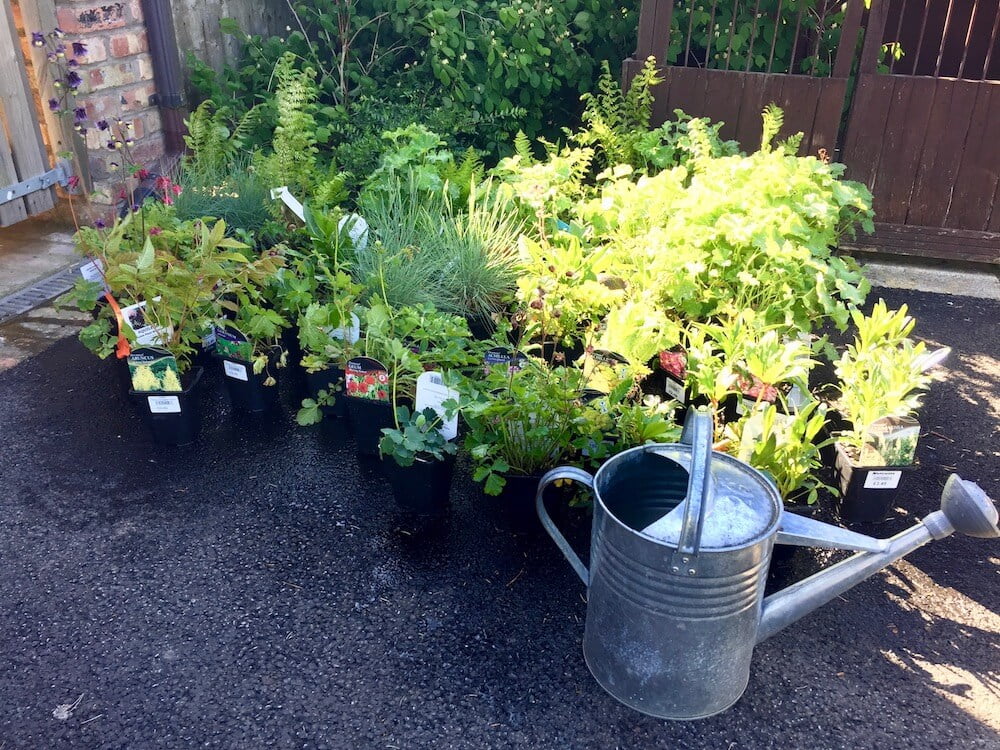
This is the most common failing in garden design. A coordinated planting scheme brings unity and cohesion to your garden. Tieing it all together and making it feel consistent and effortless.
Whilst in full bloom this garden looked really interesting, it was a one hit wonder. After the two minute 'wow look at all this?!' died down it was clear the gardener had just picked all their favourite one-offs in the garden centre. How do I know this? I know this because this was my very first garden. Here is a prime example of a pick and mix garden.
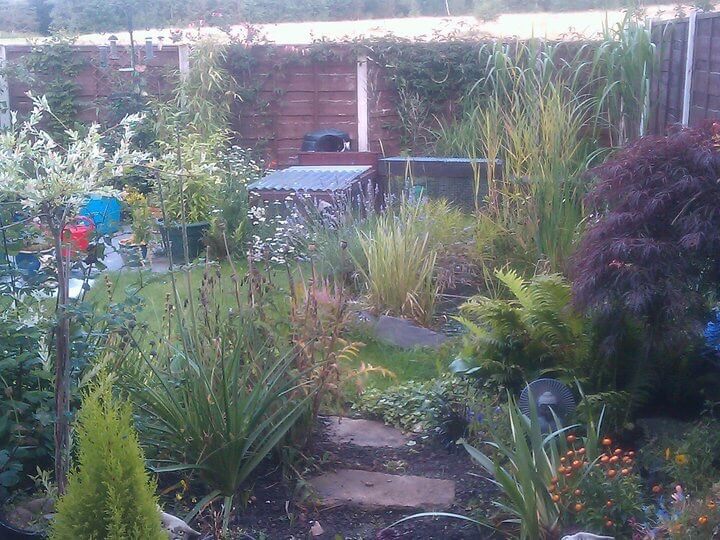
I can count over 20 different plant types here alone!
Over 12 years ago this was my idea of gardening. Don't get me wrong I still champion the 'have a go' gardening attitude and that any garden is better than none. However, if you want a truly functional garden then you need to spend more time applying design and function. I developed this garden over 2 years in a very piecemeal fashion and it showed.
I speak from experience in that you will spend more time fighting this garden than enjoying it. Plants grew at different rates, the smaller ones got swallowed up. The larger started to look lost. There was no cohesion with my first garden. That said, it helped me learn an incredible amount when it comes to garden design.
This approach will link colours and plant groups together whilst giving unity to your garden design. This gives you the maximum effect rather than one or two wow plants badly arranged with a pick and mix assortment of others. Do you really want a bamboo and a begonia next to each other? Given one is usually associated with the orient and the other hanging baskets and the Mediterranean! Also the fact one is 8ft tall and the other barely 8cm tall. That's fine if that's your intentional choice, but usually, it's better to keep plants together in terms of what would naturally grow well together.
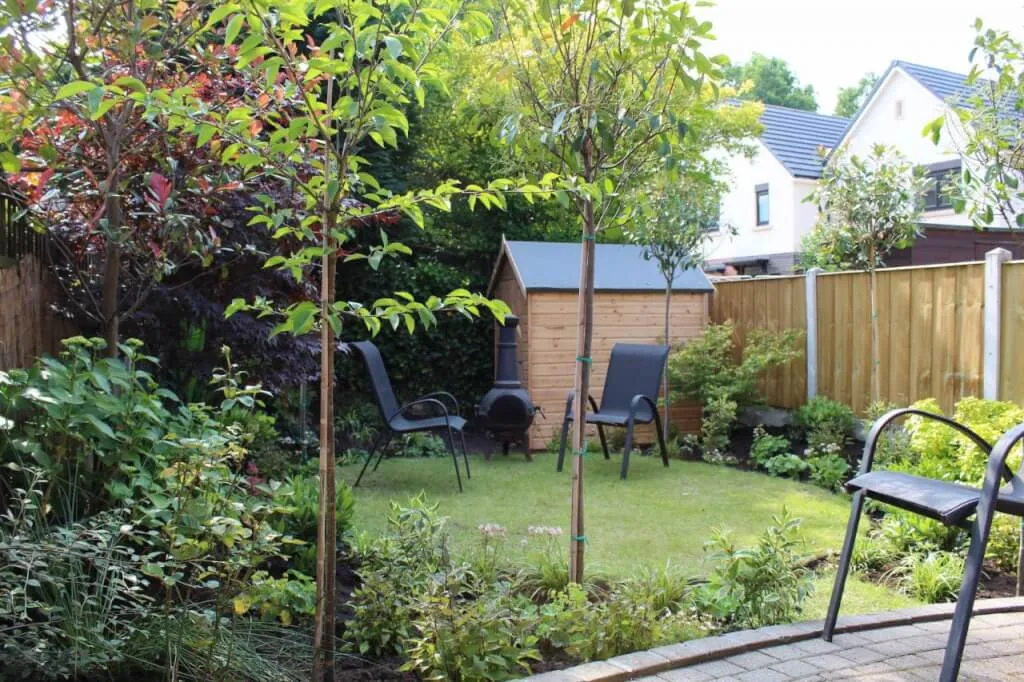 You want to avoid extremes and ensure that the planting instils a feeling of 'togetherness' whether you're looking for drama or calm. Co-ordinating plants will give you a much better well-delivered impact. There is a real skill to being able to coordinate and design planting plans. It's not something you can just extract from a book or blog. Soil type, aspect, weather temperament all need careful consideration.
You want to avoid extremes and ensure that the planting instils a feeling of 'togetherness' whether you're looking for drama or calm. Co-ordinating plants will give you a much better well-delivered impact. There is a real skill to being able to coordinate and design planting plans. It's not something you can just extract from a book or blog. Soil type, aspect, weather temperament all need careful consideration.
With some consultation in your area and soil testing, a coordinating planting scheme can be created taking all the guess work and fuss out of gardening for you. This planting plan alongside your design will include all the plants in the design and a calendar of when you can expect them to flower, be dormant or evergreen and when to prune them.
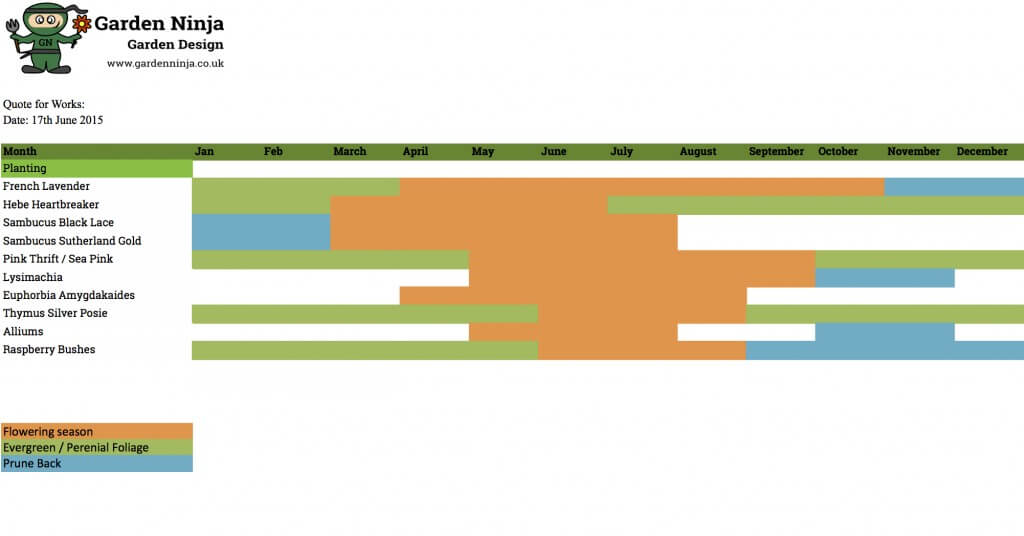 5.Understanding your gardens aspect
5.Understanding your gardens aspectThe first thing to check with any garden is the aspect. The famous south facing garden is the ideal aspect which gives full sun for most of the day. Don't fear though any aspect of a garden can be worked with. As I always say play to your strengths or weaknesses, and then you stand a much better chance of success.
Your aspect will give you a good indication of the types of plants you can grow. Some plants are very picky so you really shouldn't underestimate matching the aspect to the plants when designing a garden. Even in the darkest gardens plants for shade can be used. See my post here on planting for shade.
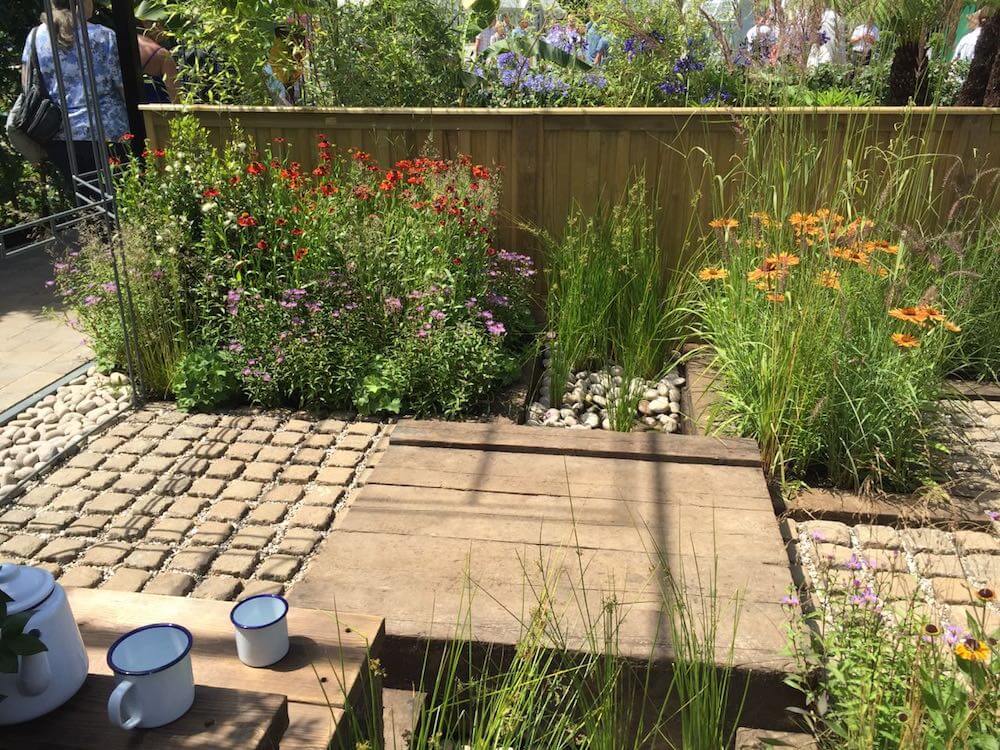
You can find the aspect by a compass or use google maps or even a smartphone compass. If your garden is large or stretches around buildings you may need to allocate two or more aspects to it. One part, for example, could be south facing with the side of the house more eastern facing.
It's key to remember that the sun rises in the East and sets in the West. Why is this? Because the Earth spins clockwise towards the East. The diagrams below are for Gardens in the Northern Hemisphere, Southern hemisphere aspects need to be switched.
We have briefly covered the areas of garden design that you will need to consider to make sure you get the most out of your garden. You'd be right in thinking there's an awful lot to consider. That is why sometimes using a specialist garden designer, like Garden Ninja, can save you a whole heap of time, effort and stress. If you are not using a garden designer I recommend taking your time and really considering each of the above to ensure that you get the most out of your garden.
Why not Tweet, Facebook or Instagram me with your pictures! You can also follow me on Youtube where I’ve got plenty of garden guide vlogs.
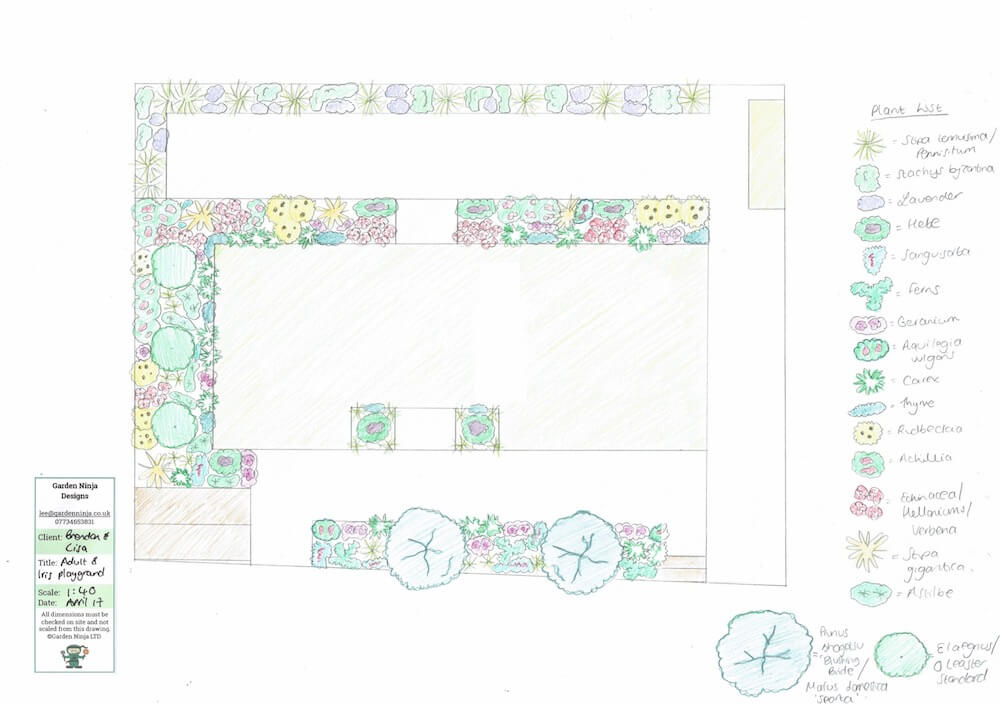
Happy Designing!



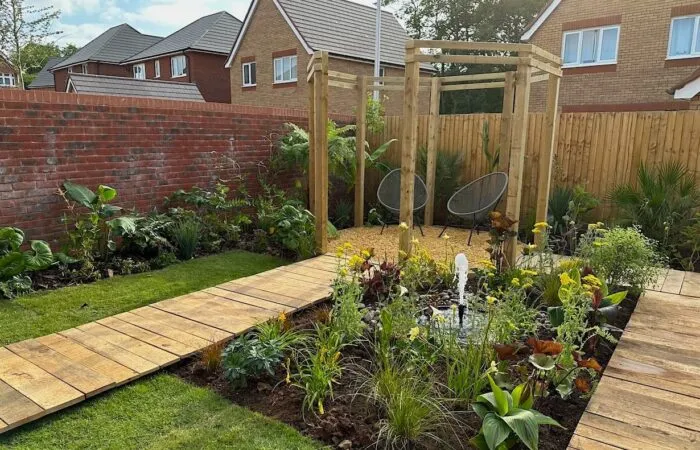

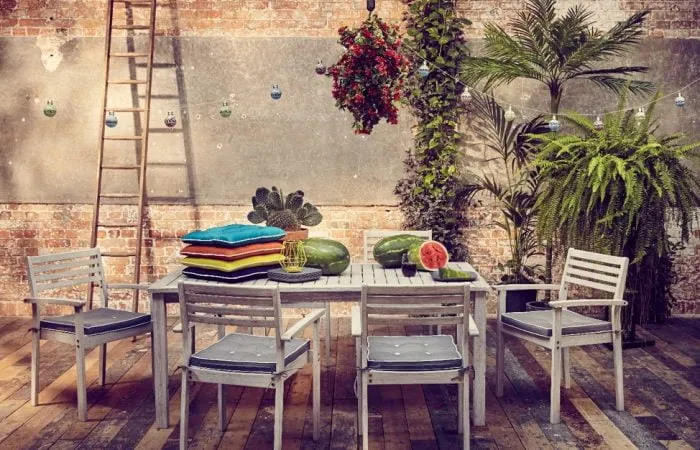
JOIN THE NINJAS

Be the first in line for new Guides, Discount codes and Offers